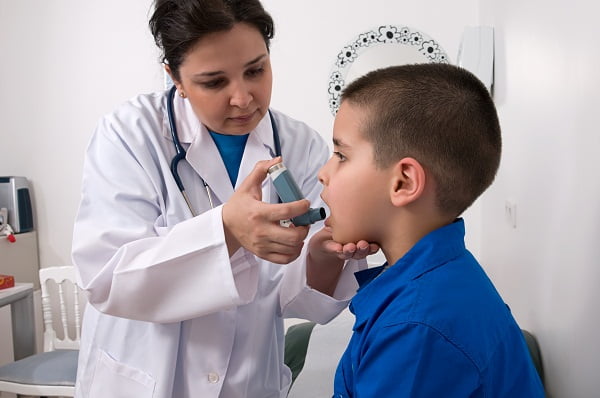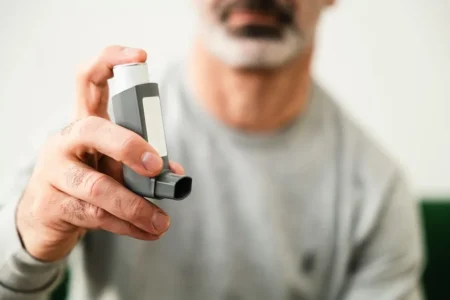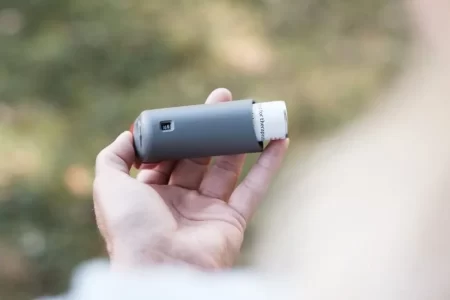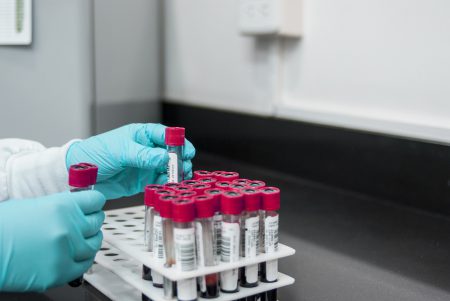
Childhood asthma
Asthma is an ongoing disorder that causes an inflammation of lungs causing airway obstruction. Airway obstruction happens when the inflammation causes the airways to narrow in response to various stimuli such as allergens, exercise, and cold air.
Childhood asthma can be managed by controlling inflammation with appropriate medications and avoiding triggers when possible.
How common is asthma in children?
Asthma is the most common disorder found in children and its prevalence is increasing day by day. Along with asthma other allergy conditions like eczema (atopic dermatitis), hay fever (allergic rhinitis), and food allergies are also very common in children.
In India, the prevalence of between 10 and 15 percent is seen among children between 5-11 years of age.
Signs and Symptoms of Asthma in children
The most common symptoms that are found in children affected by asthma are:
- Coughing (constant and made worse by viral infections, happens while the child is asleep or is sometimes triggered by exercise or cold air)
- Wheezing (whistling sound when the child exhales)
- Shortness of breath (or rapid breathing mainly during exercise)
- Chest tightness (a child may feel that his chest hurts)
- Fatigue (the child slows down or stops playing)
- Problems in feeding or grunting during feeding among infants
- Avoiding sports or social activities
- Problems in sleeping due to coughing or difficulty in breathing
Triggers of asthma symptoms in children
Symptoms are made worse by:
- Viral infection
- Smokes (tobacco, wood, etc.) or other irritants (like strong perfumes or odors)
- Exercise or active playing
- Allergens like pollen or animal fur
- Changes in weather
- Crying or laughing loudly
Diagnosis of asthma in children
Diagnosing asthma in children aged 0-5 years can be difficult because:
- Wheezing and coughing are very common in children, especially in children under 3 years.
- Lung function testing done by spirometry to detect asthma is usually not feasible in this age group.
- A high percentage of children with asthma do not have asthma at a later stage of life.
A child’s allergist may need a handful of information about the child in order to diagnose asthma. The allergist may need information about:
- Frequency of the episodes of wheezing, coughing and other symptoms
- Severity of the symptoms
- Patterns of symptoms like continuous or seasonal
- Triggers of asthma symptoms
- Medication that can make them go away
- An understanding of the family history
- Environment (smoking and air pollution)
Diagnosis of asthma for infants
Diagnosis of asthma in case of infants is quite difficult because asthma symptoms in infants can be caused by many things that may need very different therapies. The diagnosis should be done on the basis of:
- medical history
- physical exam
- 4–6 week trial of asthma medicines to see how well a child responds
Diagnosis for children above 5 years of age
The diagnosis of asthma in children is done in a series of steps including:
Medical and Family Histories
The doctor may ask about the family history of asthma, severity of symptoms, patterns of symptoms, triggers of asthma symptoms and related health conditions like a running nose or psychological stress.
Physical Exam
The doctor may listen to the breathing to look for symptoms of asthma.
Diagnostic Tests
There are some tests done to confirm the asthma diagnosis including:
Lung Function Test
This test is also known as spirometry. This test checks the functioning of the lungs. It measures the amount of air the child can breathe in and out. It also measures how fast the child can blow the air out.
Then the doctor gives some medicines to the child and checks again for asthma. If the starting results are lower than normal and improve after taking medicines then the child may have asthma.
Other Tests
The doctor may need more information in the diagnosis process and so he may recommend some more tests. These tests may include:
- Allergy testing (to find out which allergens affect the child).
- Bronchoprovocation test (to measure the sensitivity of airways).
- A test to rule out other condition with the same symptoms as asthma, such as vocal cord dysfunction.
- A chest x-ray (to find out whether a foreign object or another disease may be causing the symptoms).
Treatment of asthma in children
The goals for the treatment of asthma in children are to
- control the symptoms
- minimize the risk of future attacks
- maintain normal lung function
- maintain normal activity levels
- use the least amount of medication with the least amount of side effects
The treatment depends on the severity and frequency of the symptoms. To deal with childhood asthma, two types of medicines that are prescribed by the doctor are:
Quick-relief medicines
Quick-relief medicines are given to treat the noisy part of the disease like the coughing, wheezing and shortness of breath. These medicines are given at the onset of the symptoms for a quick relief. Therefore, it should be carried by the child all the times.
Long-term control
This type of medicine is given to the asthmatic child to treat the quiet part of asthma which includes the in?ammation of the airways. It is taken daily to prevent the symptoms.
These medicines can be taken by:
- An inhaler with a device called a holding chamber (which helps to ensure that all the medication reaches the lungs).
- A nebulizer (a machine that includes compressor tubing and a mask to help deliver a fine mist of medication directly to lungs).
Childhood asthma prevention
There is no certain prevention method for the childhood asthma but there are things that reduce the chances of children getting asthma. Some of those factors are:
No parental smoking
Parents should never smoke in the areas that can affect the child such as at home, in the car and at daycare environments.
Pregnant women should never smoke as it has adverse effect on the fetus.
Avoidance of airborne allergens at home
Airborne allergens like house dust mites, animal dander and mold should be avoided to reduce the symptoms.
Diet and breastfeeding
Breastfeeding is the best food for the baby. It should be continued for as long as possible because it helps the baby’s immune system to develop properly and reduces any risk of infections in the baby.
Parental allergy and infant feeding
Allergic mothers should avoid cow’s milk and other dairy products such as egg, peanut, and soy products during breastfeeding. Solid foods should be introduced gradually at six months of age.
Home Remedies for childhood asthma
There are certain natural home remedies which can be given to the child affected by asthma:
- A half cup of ginger tea mixed with 2-3 crushed garlic cloves can be given to the child in case of asthma attacks.
- Warm sesame oil with a pinch of salt is used to massage the chest of the child followed by steam inhalation. This helps to loosen the phlegm deposited in the chest.
- Freshly grated ginger is boiled in a glass of milk and a half teaspoon of turmeric powder is added to it. The mixture is given to the child twice a day to reduce the frequency of asthma attacks.






